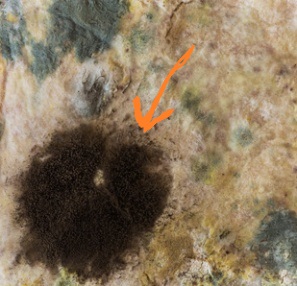Find a Mold Specialist Now
Click or Call, Toll-Free 24/7
Oidiodendron Species: Mold In The Home
There are 23 different oidiodendron species of mold found around the world. They range in color from almost colorless to dark brown and are most often found in soil and rotting vegetation. Like most types of mold, they grow quickly and spread easily.
Can Oidiodendron Species of Mold Grow in Your Home?
While it is more likely to be found outdoors, it can also grow inside a home. Mold spores are light and easily travel on the wind. They can blow in an open window. They can also land on clothing and be brought indoors that way. They can grow in potting soil. There are many ways the mold spores might find their way into a home.
Do Oidiodendron Species of Mold Cause Health Problems?
According to the U.S. Centers for Disease Control and Prevention, all types of mold can cause health problems. Some are better known for causing serious health problems, but all types of mold can make you sick. This one is no exception.
 Oidiodendron Mold
Oidiodendron MoldThere has not been as much research on this type of mold as on some other, more common types. However, we know that all molds can, and often do, cause respiratory problems. Remember how light those mold spores are? They easily become airborne and are inhaled. Then they can cause infections like sinusitis, bronchitis and pneumonia. They can cause coughing, sneezing, a runny nose, headaches, sore throats, eye infections and ear infections. They can also trigger asthma attacks. They may even lead to the development of asthma in people not previously diagnosed with the condition, especially in children exposed to mold at an early age. You can read more about health problems related to mold here.
Some people are at greater risk for illness related to mold exposure than others, including infants, elderly people, and those with pre-existing health problems. Exposure to mold can be particularly risky for pregnant women, too. Here is more about exposure to mold during pregnancy. You should know that exposure to mold is not good for anyone, though, and even previously healthy people can become ill due to exposure.
Removing Mold from Your Home
To protect your health and the health of your family, you need to remove mold from your home as quickly as possible.
When removing oidiodendron species or other species of mold, it’s important to take safety precautions because the process of cleaning up mold stirs up mold spores that are easily inhaled. Use an N-95 respirator mask, available at hardware and home improvement stores, to protect your lungs. You should also wear eye protection, such as goggles, to keep the mold spores out of your eyes. Eye infections related to mold are surprisingly common. Protective clothing and hair and shoe covers will prevent mold spores from adhering to your hair or clothing, which could later be scattered in other areas of your home or which you could later inhale. You can learn more about safety gear for mold removal here.
Use a product designed to kill mold and make sure you find and clean all areas of mold. Since mold spreads so easily throughout a house, you should inspect carefully to make sure you found it all.
If you’re experiencing symptoms of mold-related illness, we recommend arranging for someone else to handle the mold removal for you. Even if you take safety precautions, the mold removal process may expose you to mold spores that can worsen your illness. Talk to your doctor if you have questions about whether or not it is safe for you to handle mold removal in your home.
You should know that the U.S. Environmental Protection Agency (EPA) also recommends calling in a professional if you have mold covering an area larger than about three feet by three feet, if mold develops after your home has been flooded with water that might have been contaminated with something hazardous such as sewage or potentially harmful chemicals, or if mold develops in your home’s heating, ventilation and air conditioning (HVAC) ducts. Special equipment will likely be needed and additional safety precautions should be taken in these situations.
Whether you hope to do the work yourself or plan to hire someone for the job, you can schedule a free consultation with a mold removal professional in your home. An experienced professional will come and inspect your home for mold, advise you about the work that needs to be done, and answer your questions. Follow the link to find professionals offering free consultations in your area.
Return From Oidiodendron Species To Our Main Mold Types Page
Ref:
EPA - Mold Cleanup
CDC - Testing
Privacy Policy Terms and Conditions Accessibility Do Not Sell My Information Disclaimer Contact Us




